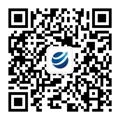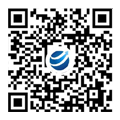In recent years, the continuous changes in accounting standards and tax laws have left an important and far-reaching impact on the accounting of the financial industry. In order to cope with the financial innovation and IT transformation of the financial industry, comply with the bank IT development trend of "small core, large periphery", and improve the operating efficiency of core business systems, banks have growing needs for a new generation general ledger architecture, an optimal solution for a robust general ledger system.
Being adopted by more than 50 banks highlights the advantages of the enterprise-level general ledger system
Since Sunline launched the Enterprise-level General Ledger in 2015, the winning rate, operating rate and delivery completion rate have all ranked first in the industry. At present, Sunline has provided general ledger products and services for more than 50 banking customers including Agricultural Development Bank of China, China Guangfa Bank, Ping An Bank, Hengfeng Bank, etc., in which some of these independent enterprise-level general ledger system have completed the construction.
The biggest feature of Sunline's general ledger system is the enterprise-level accounting center, which is a new model based on "transactions and accounting separation", exclusively created by Sunline based on a deep understanding of the bank's full business chain and IT architecture. Since 2016, more than 30 banks have achieved bank-level accounting middle-office which not only satisfies the management demands of acknowledging that "data from accounting and finance department is the only authoritative certification data in the whole bank", but also provides unified, accurate and timely accounting processing capabilities for various types of business of the bank through accurate matching of transaction and accounting information in PNL accounts, promoting the realization of business-financial integration.
In addition to the accounting center, Sunline's transaction-level general ledger system also has other features:
· Adopting the technical architecture of "distributed technology platform + microservices application", the system has unique flexibility and scalability that supports front-end and back-end separation, sub-database and sub-table, highly componentized, distributed high-performance batch running, and rapid adaptation of cloud ecosystems, lightweight service monitoring governance and other functions, ensuring that they are relatively independent and self-contained.
· From the interface with peripheral systems, to the configuration of accounting rules and reporting styles, high configuration can be realized, which is convenient for rapid adaptation to innovation and adjustment, supporting multi-organization, multi-legal, multi-currency, multi-exchange rate types and other expansions, as well as accounting measurement and engine , risk early warning and statistical analysis, etc., ultimately realizing high scalability.
· Physically, it can be divided into two major databases: basic database - responsible for platform and general ledger business configuration related services, general ledger database - responsible for high-performance processing business with table splitting operations, both use multi-user methods to distinguish databases, high availability deployment guarantee efficient utilization of resources and good system performance.
· The special interface adapter layer is responsible for the connection with external systems. There are strict standard data interface specifications, including message specifications, data file specifications, transmission specifications, etc. After receiving data from external systems, data cleaning, mapping and convert.
· More accurate business measurement, separate T+1 entry of price and tax, VAT will be different, loan No. 77 and No. 91 are exempted from tax-free accounting to the detailed level of IOUs. A complete reconciliation mechanism for total points ensures that the accounting information of the whole bank is consistent. Accuracy and authenticity help to solve the problem of uneven total scores in regulatory submissions, unified reverse accounting management, quasi-real-time reports, report traceability, automatic adjustment, audit adjustment and other functions. In addition, there are abundant special scene processing mechanisms, such as historical date accounting adjustment plans, error handling mechanisms, and multiple manual adjustment windows reserved.
· Standardization of financial data and group management capacity, subsidiary business measurement and accounting capabilities.
Systems in a top city commercial bank and a provincial agricultural credit bureau both went online, forging a weapon for the integration of accounting and finance
Sunline's general ledger system has been successfully implemented in two banks recently.
For the general ledger project of the top city commercial bank in the country, Sunline is responsible for the development of the general ledger management module, accounting measurement module, accounting engine module, batch scheduling platform, etc., taking only four months to connect more than 10 systems and the solution has officially launched this month. After going online, the bank’s daily transaction data volume has reached 20 million, daily flow measurement has reached more than 8000 TPS, the daily batch time reduced to 20 minutes, and the generated general ledger data record volume has reached 50 million.
For the large general ledger project of the rural provincial credit bureau, Sunline is responsible for the development of two system processing centers for accounting and general ledger management which connected 20 systems. The production and operations were completed in September this year.
Before starting the project, the bank and financial institution faced some accounting difficulties and limitations, which branched from the complicated interaction of the accounting processes, time-consuming changes, siloed legacy module with scattered functions, and coarse data granularity causing retrospective adjustment of subsequent events, identification of related-party transactions, as well as processing of consolidated and offset entries. The legacy accounting systems were not stable enough to handle the rapidly growing transaction volume.
In order to better cope with changes in regulatory policies and significantly ease the pressure on data processing of the legacy core systems, both banks have achieved standardization of accounting and independence of financial final accounts by building a refined, professional and unified general ledger management system. With multi-dimensional accounting information, intelligent total score reconciliation, financial management grouping and other financial goals, the business system and the accounting system can perform efficiently, rapidly respond to customer needs, achieve huge improvement in terms of speed in product innovation, laying a solid foundation in the promotion of the integration between accounting and finance.
Sunline's general ledger system separates transaction and accounting, so that the core system only focuses on transaction confirmation and customer services, greatly improving online transaction performance. By ensuring the integrity and accuracy of the accounting data, the business rules can be configured with parameters, which can quickly respond to product innovations and support the improvement of the bank's internal management and future business expansion. Sunline will always commit to technological innovation, helping banks to break through operational bottlenecks, create differentiated core competitive advantages, and achieve rapid development in the digital economy era.



